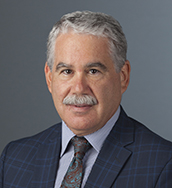Expert sees Russian hand in Montenegro conflict
LAWRENCE – What’s heating up the Balkans? And what do street protests over church property in Montenegro have to do with Russia’s strategic military aims?
 As head of the University of Kansas School of Languages, Literatures & Cultures, an expert in the languages of the former Yugoslavia and a frequent visitor to the region, Marc Greenberg observes how religious, linguistic and geopolitical forces have aligned, erupting this year into ongoing street protests in the Montenegrin capital, Podgorica.
As head of the University of Kansas School of Languages, Literatures & Cultures, an expert in the languages of the former Yugoslavia and a frequent visitor to the region, Marc Greenberg observes how religious, linguistic and geopolitical forces have aligned, erupting this year into ongoing street protests in the Montenegrin capital, Podgorica.
“Montenegro and Bosnia are getting hot, but there’s almost no English-language coverage of it,” Greenberg said. “Russia and Serbia are almost certainly trying to trigger conflict to settle scores for their losses in the 1990s.”
This makes the Slavist uncomfortable when he hears the president of the United States echo Russian leader Vladimir Putin’s take on the Balkans or sees Donald Trump shove aside the Montenegrin president at a NATO meeting. He wrote about his misgivings in a January op-ed in the Montenegrin newspaper Pobjeda (Victory).
To interview Greenberg about affairs in Montenegro and the former Yugoslavia, contact Public Affairs Officer Rick Hellman, rick_hellman@ku.edu or 785-864-8852.
In December, Greenberg became the first non-Slovene to be named an Ambassador of Science by the Slovene Ministry of Education, Science & Sport in Ljubljana, Slovenia. He is the editor-in-chief of the forthcoming Encyclopedia of Slavic Languages and Linguistics (Brill, 2020).
Greenberg sees the latest developments as part of a Russian power play, enacted through religious and cultural means. It takes a minute to explain.
“Montenegro is very small and located on the Adriatic coast, which means it has access to a warm-water port, which is valuable for exerting naval power,” Greenberg said. “It's one of the few places other than Greece where a state with a dominant Eastern Orthodox population has access to the open sea and, in particular, the Mediterranean. But Greece is part of the European Union and not the Soviet bloc.
“Russia is competing with the EU for domination in Europe, and Serbia has been at odds with the EU ever since the Yugoslav wars, because Serbia was the primary aggressor in the breakup of Yugoslavia. And so it's been kept out of the EU, which means that it has been open to closer relationships with Russia.
“Russia has long had intentions to influence and dominate whatever parts of Europe it can. And because it shares Eastern Orthodoxy with the Serbs and with the Montenegrins, it's a kind of logical place for it to extend its influence.
“Now, in Serbia, that project seems to be going fine. For example, Serbian paramilitaries have been volunteering in eastern Ukraine to help the separatists align themselves with Russia and away from Ukraine, whereas central and western Ukraine have tried to align themselves with the EU. That project is problematic for Russia because Russia sees Ukraine as the historical and spiritual heart of the original Russian state. Kyiv is where medieval Rus’ arose. The whole project moved to Moscow only in the 12th century A.D. and later so that Moscow is now the capital of the Russian Empire. But Kyiv is where it all started, so Russia is aggrieved by the loss of Ukraine. That's why they are trying to chip away at its territory. They annexed Crimea, and they're trying to use pro-Russian sentiment in the east to reduce the territory that belongs to Ukraine.
“Montenegro is divided. They have a significant Serbian-identifying population in Montenegro, but they also have a significant number of other people who identify as Montenegrins and want to restore their independent state and an independent Montenegrin church, which had been independent up through the 19th century with their independence as a principality.
“The Serbian Orthodox Church has asserted its right to claim church territory in Montenegro as its own. And the conflict arose because the secular parliament in the Montenegrin capital, Podgorica, has passed a law saying that ownership of church lands must be proven by deed. This is seen as a challenge to the appropriation of church territory by the Serbian Orthodox Church.
“This church conflict is a kind of proxy for who owns the state. Do the Serbs or do the Montenegrins own the state? The Serbian Orthodox Church, through whom the Serbian government is working, is making the claim that Montenegro is an inseparable part of Serbia, whereas Montenegrin patriots claim otherwise — that Montenegro has its own church and its own state, and then comes language. Language is the marker of who belongs in our group. It marked its independence as a state, among other things, with those linguistic differences.”
What’s heating up the street, Greenberg said, is that the Serbian Orthodox Church has organized marches he described as “processions led by priests – litije. These are demonstrations of what the Serbs believe is the dominant religious group in the country, identified with the Serbian Orthodox Church.”
“Montenegrins have tried to stay away from these, although there are some provocateurs who are counterprotesters to these processions. There have been flag burnings and desecrations. Pro-Serbian groups were desecrating the Montenegrin flag to degrade its legitimacy in a symbolic way.”
To Greenberg, it’s depressingly of a piece with the intercommunal strife that marked the Yugoslavian wars he witnessed as a younger man.